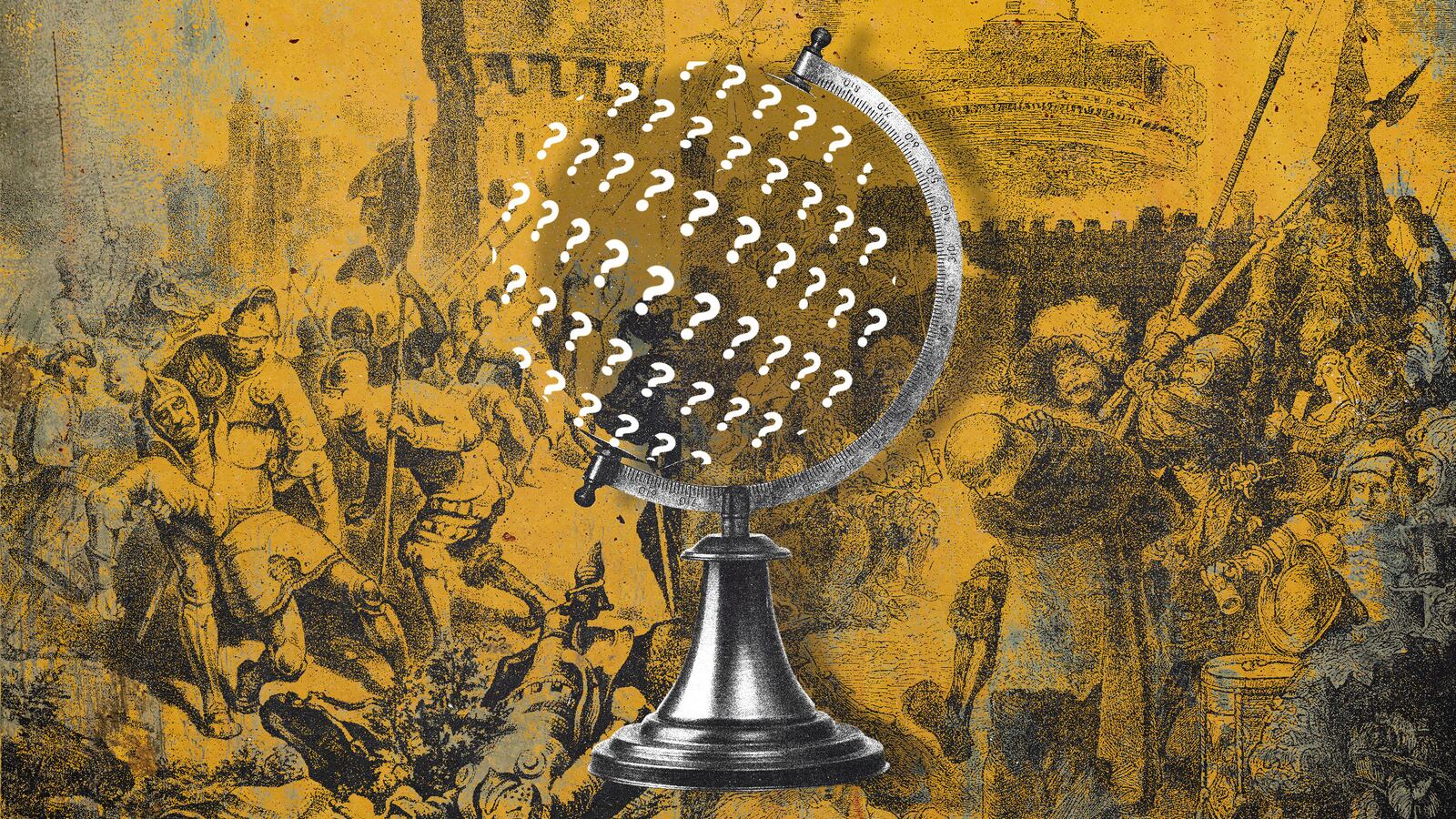When the mercenaries aligned with the Holy Roman Emperor Charles V breached the walls of Rome on May 6, 1527 at 7:30 a.m., all hell broke loose.
The 24,000-strong army of Spanish and German soldiers descended on the residents of the papal stronghold with nothing less than gold in their eyes and merciless brutality in their sword-wielding hands.
They hadn’t been paid in weeks, after all, and the city had been offered to them for their taking by their commander the Duke of Bourbon as recompense for late wages.
The destruction was nearly total. Over the course of a month, buildings were burned; anything of value that moved was taken; half of Rome’s residents were killed or displaced, not to mention the countless survivors who were tortured and raped including nuns and children.
An eyewitness to the slaughter wrote that so many Romans had been killed “that one could no longer see the pavement while walking down the street, there were so many corpses.”
The destruction was catastrophic to such a degree that some claim it brought the Italian Renaissance to an end.
It would take centuries to calculate the cultural losses from the 1527 sacking of Rome, and many works of art surely vanished from historical memory forever.
But over the past century, the existence of two important pieces of both science and art have been “re-discovered,” though they remain missing: in 1477, Nicolaus Germanus created two globes, one celestial and one terrestrial, that, had they survived the plunder, would have been some of the earliest globes produced in the West.
Today, the painstaking art of handcrafting globes has been relegated to a small number of craftsman trying to keep the dying art form alive. With Google maps in nearly every pocket, globes have been largely relegated to stately decorative objects in swanky offices or musky, book-lined studies.
But in the 15th century, Germanus’ creations were innovative and exotic scientific objects, not to mention pieces of high art. The contours of the world were still being explored, and the map of the Earth was in constant flux with each new discovery.
In 1522, Ferdinand Magellan would become the first to circumnavigate the globe, thus proving once and for all that Earth is round. But that was 45 years after Germanus created what would have been the earliest known terrestrial globe produced in the West. (Arabic astronomers were about 1000 years ahead of the Europeans).
Nicolaus Germanus was born in 1420 in Germany. While many details of his life remain unknown, leading to what Dana B. Durand described in 1933 in the scientific journal Isis as “a somewhat shadowy personality,” it is thought that he studied to become a Benedictine monk at the Reichenbach Abbey.
During the time Germanus would have been in residence, the abbey was under the leadership of Abbot Engelhard, who had turned the monastic training center into a hub of scientific study.
The abbot not only created several inventions of his own for taking astronomical measurements, but it is said that every monk who studied at his institution left with a comprehensive education in astronomy.
After Germanus completed his studies, the monk made his way to Italy, where he settled down to pursue his scientific and artistic calling. Germanus was an inspired mapmaker and artist and a scientist in his own right. He had a particular fascination with the works of Ptolemy.
One of the creations Germanus is most well-known for—the work that gained him fame in his day—was his edition of Ptolemy’s Geography.
While he remained faithful to Ptolemy’s text, he made improvements on the maps featured in the volume. Germanus dedicated one of his editions of the work to the pope, writing “We have in no particular departed from the intention of Ptolemy, although we have deviated a little from his picture.”
In a 1987 essay for the International Coronelli Society for the Study of Globes, Polish historian Jozef Babicz wrote, “The important role of Germanus in the history of cartography can be explained by his all-roundness as a man of the Renaissance who with his classical knowledge combined also that of astronomy.”
His work was so impressive, Babicz wrote, that he deserved to have been considered among the class of leading scientists in the Italian Renaissance.
While Germanus may not be a household name today, he was well known among the scientific circles of his day and to their most influential patrons. For one commission, he used his studies of the planetary positions to create a horoscope for none other than Pope Paul II.
Whether Pope Paul II was impressed by his outlook for love and power in the coming months, we’ll never know. But under his successor Pope Sixtus IV, Germanus was once again creating a masterpiece for the Vatican.
It’s unclear whether the Vatican Library commissioned Germanus to create two globes in 1477 or whether they were so impressed by Germanus’ pioneering invention that they just had to have them; what is known, is that on December 11, 1477, the Vatican bursar issued a receipt for a whopping 200 ducats to Germanus “for a work done ‘with one’s own hands’ which can be seen in the Library.”
The details of the world as painstakingly depicted by Germanus are no longer known. But we do know that the artistic craftsmanship was unparalleled and that the technical innovations Germanus used to create the two globes had never been seen before.
An agent for the Marchesa of Mantua wrote to his employer on April 8, 1505 that the globes “show great artistry in wood, fittings, brass rods and other things linked together with great precision to spin in each direction.”
The marchesa, who was from a family who had been some of the greatest patrons of the scientific arts for decades, was interested in commissioning a reproduction of the two globes.
By this time, Germanus was dead, but his work remained the highest in technical and artistic craftsmanship. The marchesa’s agent wrote to her that the 40 ducats they had allotted for the project would not be sufficient. To create a faithful reproduction, they would need to shell out 200 ducats, the same price Germanus was paid for the works. She agreed.
Germanus’s originals were kept in the Vatican Library, where they were prized by the resident librarians and exhibited in the Salle Pontificia on wooden legs and under protective casing. Both the globes and their display were adorned with the seal of Pope Sixtus IV.
It was here that they stood when mercenaries streamed into the city in 1527.
According to Noah Charney in Museum of Lost Art, the Vatican Library was mostly protected from the rampage. The Duke of Bourbon had been killed in battle before the walls had been breached, and his successor took over the library as his headquarters.
But it appears his protection didn’t reach as far as the spherical depictions of Heaven and Earth. Germanus’s globes disappeared in the melee and haven’t been seen since.
While there are hints of Germanus’s creations in globes depicted in works of art from the period, the innovative originals by the astronomer have been lost to time, as has his title of “first.”
Today, the honor of the earliest existing terrestrial globe goes to the one known as “Erdapfel” that was made by Martin Behaim...15 years after Germanus revealed his vision of the world.







